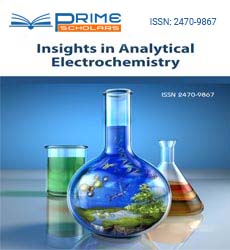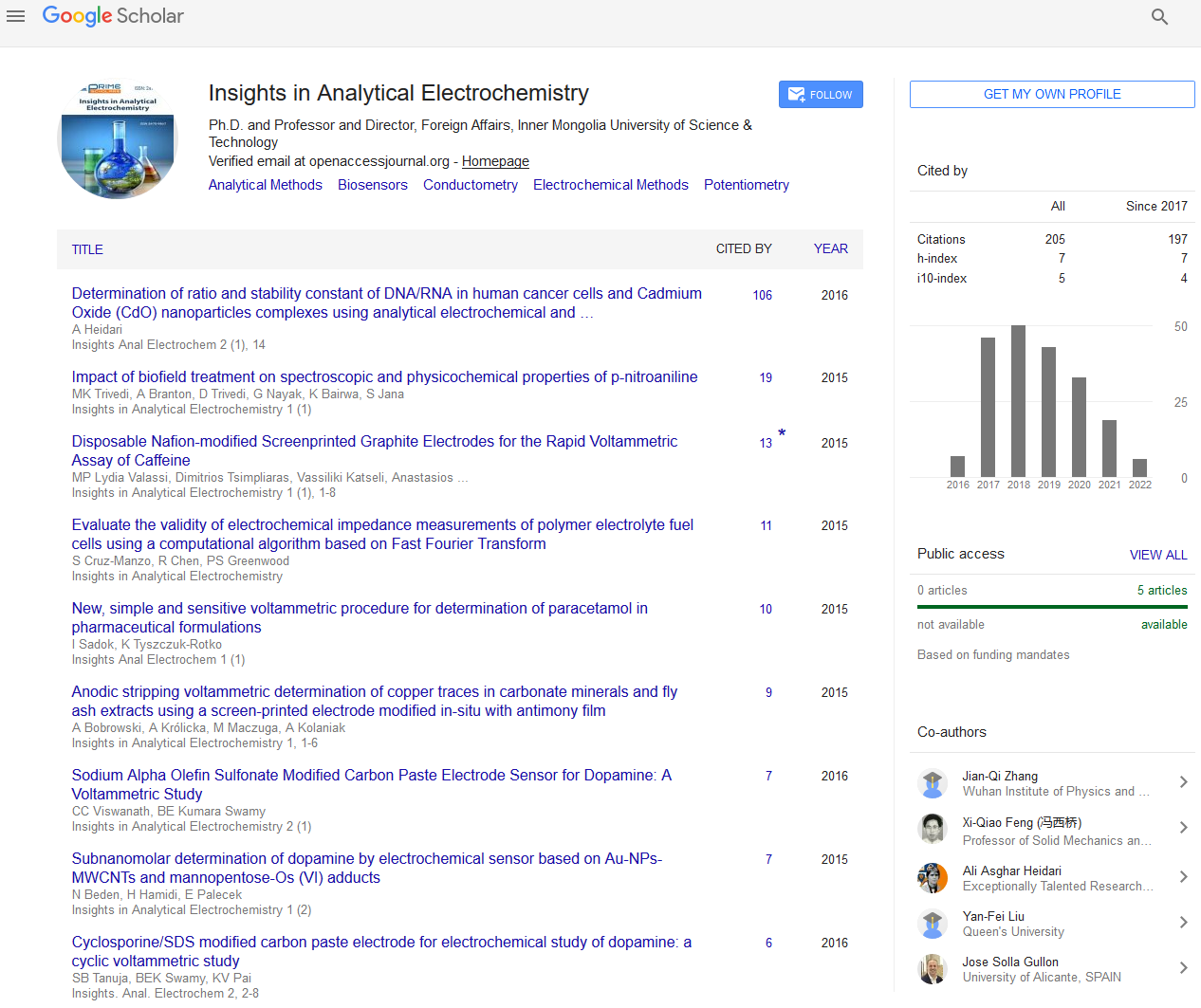Short Communication - (2022) Volume 8, Issue 6
The Analytical Device that Incorporates a Biological Sensing Element
Yeni Hartati*
Department of Chemistry, Universitas Padjadjaran, Indonesia
*Correspondence:
Yeni Hartati,
Department of Chemistry, Universitas Padjadjaran,
Indonesia,
Email:
Received: 01-Nov-2022, Manuscript No. IPAEI-22-15178;
Editor assigned: 03-Nov-2022, Pre QC No. IPAEI-22-15178;
Reviewed: 17-Nov-2022, QC No. IPAEI-22-15178;
Revised: 22-Nov-2022, Manuscript No. IPAEI-22-15178;
Published:
29-Nov-2022, DOI: 10.21767/2470-9867-8.6.26
INTRODUCTION
A biosensor is an analytical device that combines a physicochemical
detector with a biological component for chemical
substance detection. The sensitive biological element, such as
cell receptors, enzymes, antibodies, nucleic acids, and so on,
is a substance or biomimetic component that binds to, recognizes,
or interacts with the analyse under investigation. Biology
can also be used to make the parts that are sensitive to
life. The transducer or the finder component, which changes
one sign into another, works in a physicochemical way=electrochemical,
electrochemiluminescence, optical, piezoelectric,
etc., resulting from the analyses interaction with the biological
component, making it simple to measure and quantify. The biosensor
peruser gadget interfaces with the related hardware
or sign processors that are fundamentally liable for the presentation
of the outcomes in an easy to use way. This occasionally
represents the most costly piece of the sensor gadget, but it
is feasible to produce an easy to use show that incorporates
transducer and delicate component (holographic sensor). In
most cases, the readers are made and designed specifically to
accommodate the various biosensor operating principles. The
degree of integration of the various components in a biosensor
can be divided into three generations. How the bio recognition
or bio receptor molecule is attached to the base transducer element.
Description
In the original, the bio receptor is genuinely entangled nearby
the base sensor behind a segregating film like a dialysis layer.
In resulting ages, immobilization is accomplished through covalent
bonds at a reasonably changed transducer interface or by
joining into a polymer framework at the transduction surface.
The bio receptor molecule becomes an essential component
of the base sensing element in the third generation, whereas
the individual components remain essentially distinct in
the second generation (for instance, control electronics-electrode-
biomolecule). The analytical device that incorporates a
biological sensing element is referred to as a “biosensor,” and it can be used for a wide range of purposes, including drug discovery,
diagnosis, biomedicine, food safety and processing, environmental
monitoring, defence, and security. The strategy of
electrochemically detecting oxygen or hydrogen peroxide using
an immobilized glucose oxidase electrode was used in the initial
biosensor that Clark and Lyons developed in 1962 to measure
glucose in biological samples.
Conclusion
Since then, innovative approaches ranging from electrochemistry
to nanotechnology to bioelectronics have led to significant
advancements in biosensor technology and application. This
review aims to provide fundamental knowledge and present
the scientific scenario of biosensor technology in light of the
phenomenal advancements in the field of biosensors by introducing
various technical strategies used in the development of
biosensors. With a focus on the research tools that show how
the performance of biosensors changed from electrochemical
to optical/visual, polymers, glass, silica, and nanomaterial’s
were used to increase the detection limit, sensitivity, and selectivity.
Interestingly, bioluminescence and microbes also played
a significant role in the development of label-based biosensors,
whereas nanomaterials and devices based on transistors
or capacitors were utilized in the development of label-free
biosensors. For quantitative biologists, biosensors provide a
foundation for comprehending technological advancement
in instrumentation, which includes portable qualitative or
semi-quantitative devices for non-specialists and sophisticated
high-throughput machines for quantitative biologists. Finally,
limitations in the field, challenges in the future, and current
research trends are discussed. Even though these definitions
were probably meant for enzyme electrode systems, biosensors
in general can be categorized in a similar way. The bulk of
these families’ development is now visible in the second and
third generations [1-4].
Acknowledgement
None.
Conflict Of Interest
The author’s declared that they have no conflict of interest.
Citation: Hartati Y (2022) The Analytical Device that Incorporates a Biological Sensing Element. Insights Anal Electrochem. 8:26.
Copyright: © 2022 Hartati Y. This is an open-access article distributed under the terms of the Creative Commons Attribution License, which permits unrestricted use, distribution, and reproduction in any medium, provided the original author and source are credited.

